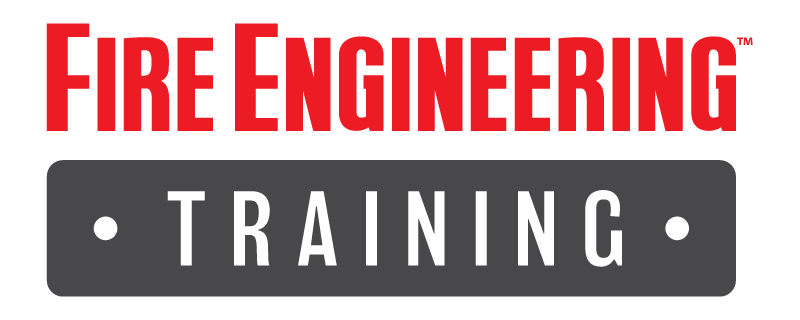Choosing a new learning management system can feel overwhelming, whether you’re looking to implement the first–ever LMS in your fire department, or looking to switch from your current platform. Here’s a simplified five-step approach to guide you through the process:
1. Define Needs and Objectives
Before you start looking at technology partners, it’s critical that you identify what your needs and wants are. The list will make the vendor vetting process much smoother – quickly identifying whether they’re a good fit for your department.
When building the list be sure to involve different stakeholders such as other officers and firefighters, or even colleagues from other areas such as Human Resources or IT. This collaboration will help you build a comprehensive list of what your department needs and will help with adoption of a new platform if they feel involved in the process.
To get you started, here are a few questions to consider:

Content
- Do you need a platform that provides fire and EMS training content? If yes:
-
- Do they meet your training, compliance, and recertification requirements?
- How often is content added and/or updated?
- Are the courses interactive? Different formats appeal to different kinds of learners, so a mix of reading, videos, images, audio, and more can increase engagement and retention of information.
-
- Do you need the ability to store your own training materials? If yes:
-
- What capabilities does this tool have?
- How easy is creating, storing, sharing, or updating your own content?
-
Tracking & Reporting
- What do you need to be able to track and report on?
-
- A few examples include: licenses and certifications, ISO hours, hands-on training, e-learning completions.
- Take note of what you currently have to report on during regular audits and any challenges you’re experiencing.
-
- Who will need access to the platform and to what extent?
-
- Do you have different groups of personnel that you need to account for based on ranks or shifts?
- Does the system allow easy management of users and groups, including tracking attendance, progress, and performance?
- Can you delegate tasks to certain members to ease the admin process?
-

IT Needs
-
Do you currently have any systems that this platform needs to integrate with?
-
Advanced: Will you require single sign-on (SSO)?
2. Research Vendor Options
There are several ways to find LMS vendors:
Online Research
Search for recommendations online. Don’t limit yourself to results from search-engines like Google, make sure that you’re utilizing industry-specific sites like FireEngineering.com and other professional associations. This will help filter down to platforms that are designed with the fire service in mind.
Word of Mouth
Reach out to neighboring departments for suggestions based on firsthand experiences.
Industry Events
Attend local or national training events as they’re likely exhibiting and offering demos to their platforms.
Once you have a list of those you want to look into, schedule demos and see how their features align with your list of must-haves. Plus, always find out what sets them apart from their competitors. It’s likely that you will uncover additional benefits that you might not have considered previously, for example if they offer a mobile app (making training more flexible and accessible to your team)
3. Evaluate Ease of Use
As you explore LMS options for your fire department, it’s crucial to prioritize ease of use to ensure smooth adoption by both administrators and learners. Firefighters and EMS personnel often work in fast-paced, high-pressure environments, so the platform must be intuitive and easy to navigate, requiring minimal technical skills. An LMS with a user-friendly interface will allow staff to focus on training content rather than troubleshooting the system, while streamlined administrative tools will simplify course management, tracking, and reporting for those overseeing the training. Additionally, the level of support and training provided by the vendor can play a critical role in the system’s successful implementation. Choosing an LMS that is easy to manage and operate will save time, reduce frustration, and ensure a more efficient learning process for everyone involved.
Consider asking these questions to any potential vendors:
Onboarding: What’s the onboarding process like for new users and administrators, and how long does it typically take to get everything set up and running?
Support: What kind of ongoing support do you provide, and how quickly can we expect issues to be resolved?
References: Can you provide examples of how other fire departments or emergency services teams have successfully adopted and used your platform?
4. Set a Budget and Explore Pricing Models
Cost is often a major consideration when choosing an LMS for a fire department, but it’s important to weigh that cost against the long-term benefits. A well-implemented LMS can save significant time and resources by streamlining training, reducing the need for in-person sessions, and ensuring that firefighters and EMS personnel are consistently up to date on certifications and procedures. By balancing cost with functionality and potential savings, the right LMS can provide lasting value and improve operational efficiency. Here are a few things to consider when evaluating from a cost perspective:
Cost Factors
Identify all upfront costs, subscription fees, user-based fees, or additional fees for extra features like advanced reporting or integrations.
Value for Money
Evaluate whether the LMS offers features that meet your department’s specific needs and compare it with competitors to get the best value.
Explore Grants and Funding
Research available grants or funding opportunities for public safety training and technology. Federal programs like the Assistance to Firefighters Grant (AFG) and local/state grants might help cover the cost of the LMS.
5. Test and Review LMS Options
After narrowing down the options based on features, ease of use, and budget, the next critical step is to test and evaluate the LMS platforms in real-world scenarios. It’s essential to experience firsthand how the system functions for both administrators and end-users like firefighters and EMS personnel. Testing various options ensures that the final choice is a well-informed one that meets the department’s specific needs.
Demos and Trials
Request demos or free trials of a few different LMS platforms to test how they function in your fire department’s environment.
Feedback from Stakeholders
Involve key personnel (training officers, firefighters, IT, etc.) in testing to get their input on usability and features.
Vendor Reputation
Research vendors’ reputations in the fire/EMS field. Check reviews or get recommendations from other fire departments that use similar systems.
In conclusion, selecting the right LMS for your fire department is a crucial decision that can significantly impact training effectiveness and operational efficiency. By following this five-step approach—defining needs and objectives, researching vendor options, evaluating ease of use, setting a budget, and testing potential platforms—you can navigate the complexities of LMS selection with greater confidence. Involving various stakeholders throughout the process not only ensures that the chosen system meets the diverse requirements of your personnel but also fosters buy-in for successful implementation.
Remember, the right LMS will not only streamline training and improve compliance but also ultimately enhance the readiness and effectiveness of your team in responding to emergencies. Investing the time and effort in this process will pay off in the long run, ensuring that your department is equipped with the best tools for ongoing learning and development.



